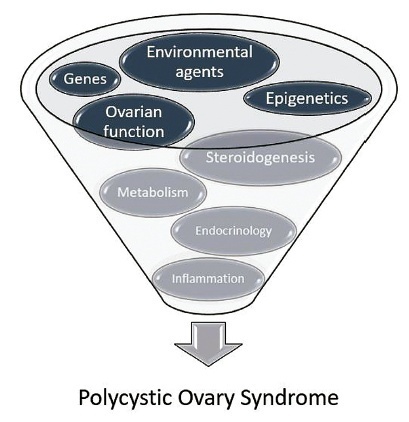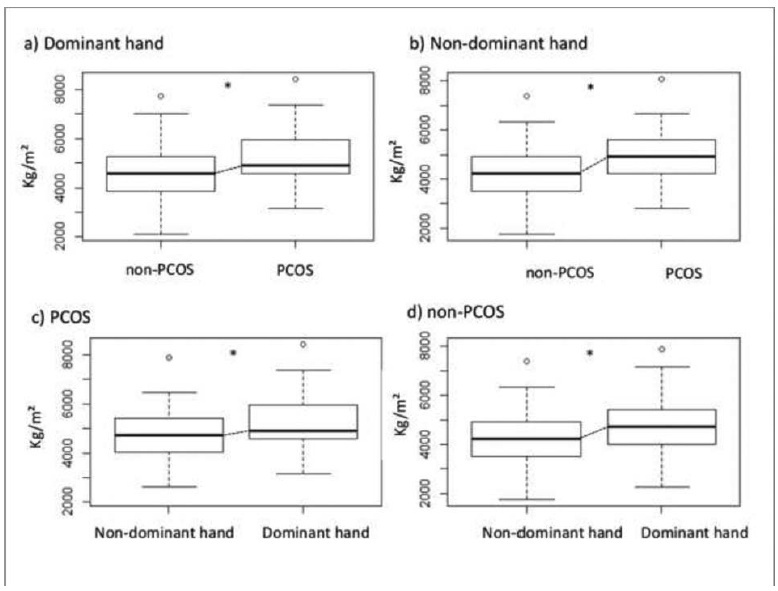Summary
Revista Brasileira de Ginecologia e Obstetrícia. 2024;46:e-rbgo37
To identify the impact of redox imbalance on the clinical evolution of patients with polycystic ovary syndrome and carry out a qualitative and quantitative projection of the benefits of vitamin D supplementation.
Combinations of the keywords polycystic ovary syndrome, vitamin D, oxidative stress, reactive oxygen species, antioxidant, and free radicals were used in PubMed, Cochrane Library, LILACS, EMBASE, and Web of Science databases. The last search was conducted on August 22, 2023.Selection of studies: Based on the inclusion and exclusion criteria, studies were selected considering a low risk of bias, published in the last 5 years in English, which investigated the effects of vitamin D supplementation in women with PCOS, focusing on oxidative stress markers. Of the 136 articles retrieved, 6 intervention studies (445 women) were included.
The risk of bias in included studies was assessed using the Jadad scale, and analysis and visualization of continuous data were performed using Review Manager 5.4.1, summarized as standardized mean differences (SMD) with confidence intervals (CI) of 95%.
Vitamin D effectively reduced malondialdehyde (P=0.002) and total testosterone (P=0.0004) levels and increased total antioxidant capacity levels (P=0.01). Although possible improvements in the modified Ferriman–Gallwey hirsutism score, levels of sex hormone-binding globulin, and free androgen index were identified and the results were not statistically significant.
Vitamin D is a promising alternative for the treatment of PCOS with a positive influence on the oxidative, metabolic, and endocrine disorders of this syndrome.

Summary
Revista Brasileira de Ginecologia e Obstetrícia. 2022;44(4):425-433
Diagnosing polycystic ovary syndrome (PCOS) during adolescence is challenging since normal pubertal development overlap typical features of this syndrome. The authors aim to summarize the existing evidence concerning PCOS in adolescence, particularly its diagnostic criteria and therapeutic options. A search throughout medical databases such as PubMed and MedScape was performed. Diagnostic criteria include irregular menstrual cycles according to time postmenarche and evidence of clinical hyperandrogenism and/or biochemical hyperandrogenism, provided other causes have been excluded. Polycystic ovarianmorphology ought not to be used as a diagnostic criterion. Treatment should targetmanifestations and/or comorbidities, even in the absence of a definite diagnosis. Lifestyle interventions are the first-line treatment. Combined oral contraceptives, metformin or antiandrogens may also be considered as adjuvants. Screening for PCOS in adolescence is crucial as it allows an early intervention on the symptoms and comorbidities presented leading to better long-term reproductive and metabolic outcomes.

Summary
Revista Brasileira de Ginecologia e Obstetrícia. 2020;42(12):811-819
The present study aimed to investigate the physical performance of handgrip strength (HGS) in women with polycystic ovary syndrome (PCOS).
A case-control study that included 70 women with PCOS and 93 agematched healthy women aged between 18 and 47 years with body mass index (BMI) between 18 Kg/m2-39.9 Kg/m2. The serum levels of total testosterone, androstenedione, insulin, estradiol, thyroid-stimulating hormone (TSH), prolactin, sex hormonebinding globulin (SHBG), and 17-hydroxyprogesterone (17-OHP) were measured. The free androgen index (FAI) and the homeostatic model assessment of insulin resistance (HOMA-IR) were calculated. The body composition regions of interest (ROIs) were assessed by dual-energy X-ray absorptiometry (DXA), and the handgrip strength (HGS) was evaluated for both the dominant and the non-dominant hands with a manual Sammons Preston (Bolingbrook, IL, US) bulb dynamometer.
Women with PCOS had high serum levels of total testosterone (p < 0.01), androstenedione (p = 0.03), and insulin (p < 0.01), as well as high FAI (p < 0.01) and HOMA-IR (p = 0.01) scores. Compared with the non-PCOS group, the PCOS group had greater total lean mass in the dominant hand (p < 0.03) and greater HGS in both the dominant and the non-dominant hands (p < 0.01). The HGS was correlated with lean mass (p < 0.01).
Women with PCOS have greater HGS. This may be associated with age and BMI, and it may be related to lean mass. In addition, the dominance effect on muscle mass may influence the physical performance regarding HGS in women with PCOS.

Summary
Revista Brasileira de Ginecologia e Obstetrícia. 2020;42(2):81-89
The present study aimed to analyze cardiac autonomic modulation via spectral and symbolic analysis of heart rate variability (HRV) in women with polycystic ovary syndrome (PCOS) who were subjected to two consecutive tilt tests.
A total of 64 women were selected and divided into 2 groups: control (without PCOS), and PCOS. Concentrations of follicle-stimulating hormone, luteinizing hormone, prolactin, estradiol, homocysteine, sex hormone-binding globulin, thyroid stimulating hormone, fasting insulin, testosterone, androstenedione, and 17-hydroxyprogesterone levels, triglycerides, free androgen index (FAI), and homeostasis assessment model (HOMA-IR) were assessed. Cardiac autonomic modulation was evaluated by spectral and symbolic analyses during two consecutive tilt tests (two moments) and supine moments before, between and after (three moments) the tilt tests.
Women with PCOS had higher fasting insulin, HOMA-IR indexes, testosterone and FAI. Additionally, we observed that the PCOS group had greater sympathetic autonomic cardiac modulation in supine 2, tilt 1, and supine 3 moments compared with controls.
Women with PCOS had higher autonomic sympathetic cardiac modulation even after a second tilt test. No adaptation to this provocative test was observed. Spectral analysis was more sensitive for identifying differences between groups than the symbolic analysis.
Summary
Revista Brasileira de Ginecologia e Obstetrícia. 2018;40(4):188-195
To analyze the association between the indirect methods of evaluating insulin resistance (IR) and blood pressure, anthropometric and biochemical parameters in a population of polycystic ovary syndrome (PCOS) patients.
Cross-sectional study performed at the Hospital Universitário de Brasília (HUB, in the Portuguese acronym) involving PCOS patients diagnosed from January 2011 to January 2013. Four indirect methods, namely, fasting blood insulin level, fasting glucose/insulin ratio (G/I), homeostatic model-assessment-insulin resistance (HOMA-IR), and the quantitative insulin sensitivity check index (QUICKI), were used to obtain the IR diagnosis. The data were analyzed using the test of proportions, the Chisquare test, and Fisher exact test, when indicated.
Out of the 83 patients assessed, aged 28.79 ± 5.85, IR was found in 51.81- 66.2% of them using the G/I ratio and the QUICKI, respectively. The test of proportions did not show a significant difference between the methods analyzed. The proportion of IR diagnoses was statistically higher in obese women than in women with normal body mass index (BMI). We observed a statistically significant association between all the methods for diagnosing IR and BMI, waist circumference (WC) and lipid accumulation product (LAP). With regards to arterial hypertension (AH), we observed a significant association according to three methods, with the exception of the ratio G/I.
Insulin resistance prevalence varied according to the diagnostic method employed,with no statistical difference between them. The proportion of IR diagnoses was statistically higher in obese women than in women with normal BMI.We observed a significant association between IR andWC, BMI, LAP, as well as dyslipidemia and AH in a high proportion of patients.
Summary
Revista Brasileira de Ginecologia e Obstetrícia. 2017;39(12):692-696
To evaluate the effects of nutritional counseling on the dietary habits and anthropometric parameters of overweight and obese adolescentswith polycystic ovary syndrome (PCOS).
This was a prospective, longitudinal and auto-controlled study. Thirty adolescents aged 13-19 years-old, diagnosed with PCOS received nutritional counseling and were followed-up for 6 months. After the follow-up period, the results were evaluated through body weight, body mass index (BMI) and waist circumference (WC).
Sixty-percent of the adolescents adhered to the nutritional counseling and, of these, 50% lost weight. Adolescents who lost weight changed their dietary habits by adopting hypocaloric diets and eating more meals per day, as per nutritional counseling. The waist circumference (WC) decreased significantly, although the body weight decreased non-significantly after adoption of a hypocaloric diet.
Although there was no significant weight loss, there was a considerable reduction in theWCassociated with hypocaloric diets and with eating a greater number of meals per day.